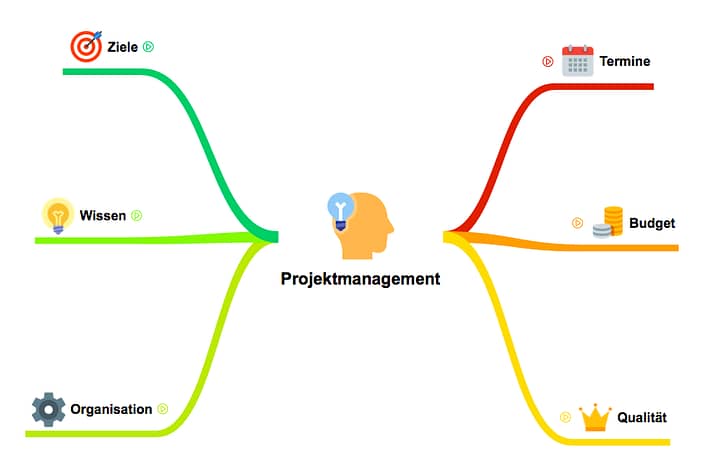Project management
Classical project management consists purely of balancing several parameters or partial aspects of projects. For example, costs, deadlines and quality are the most common parameters in real estate projects. In most cases, there are also organizational and other important aspects, depending on the complexity and nature of a project, for example in administration, real estate development or due diligence
Preparation is very important for the processing of projects. More than mere implementation, it must be clear that a precise definition of objectives, the planning of available resources or the definition of decision-making powers and the information provided to project participants have a decisive influence on the success of the project.
If there are deficits here, the next steps, for example project planning, already produce double the work.
Cost planning with budgets should always include a buffer, however small it may be, we will need it. Cost savings always go hand in hand with optimized processes and should never be under deadline pressure.
Scheduling is an important aspect of project planning and is often neglected. Updates to well-planned schedules quickly reveal problems in the event of changes. Schedule optimization should never be under cost constraints, too hasty or no schedule updating causes generalizations and does not take errors into account.
The project or building specification with the definition of the qualities must always be weighed up in terms of deadlines and costs; a lack of courage causes false expectations and leads to constraints.

The problem
Projects become more expensive, the organization fails because not all the cogs mesh, deadlines are not met.
It is often not clear what the initial cause of a project being skewed is.
The solution
The Hawk Vision method:
Simplifying the task and answering the 3 key questions:
– What is the goal?
– What resources are available?
– Which project aspect is prioritized?
Experience and intensive workshops are held for this purpose. Often, changes in the organization are also recommended after the restart, as projects that have gone awry have also caused prejudices and strained relationships.
